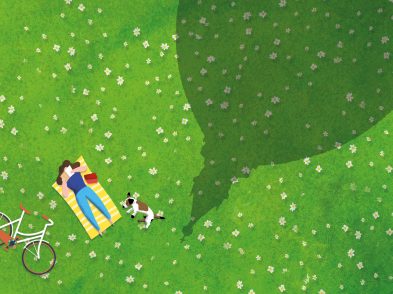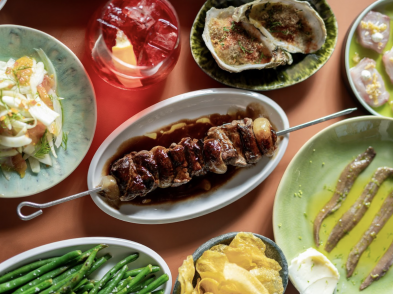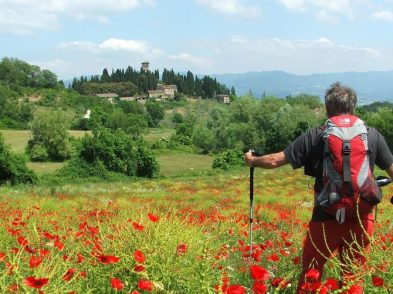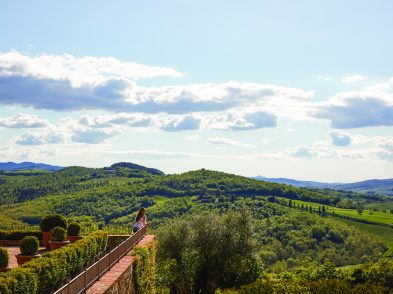In the early 1890s, an advertisement in The Florence Herald, the city’s English newspaper at the time, drew attention to the Florence Golf Club. Readers learnt about the “links at San Donato near The Cascine (12 minutes by tram from Piazza del Duomo)” created by the British community on land belonging to the Demidoff family. Heir to those 18 holes in late nineteenth-century Florence, Golf Ugolino is idyllically nestled in the Tuscan countryside up the hill from Grassina.
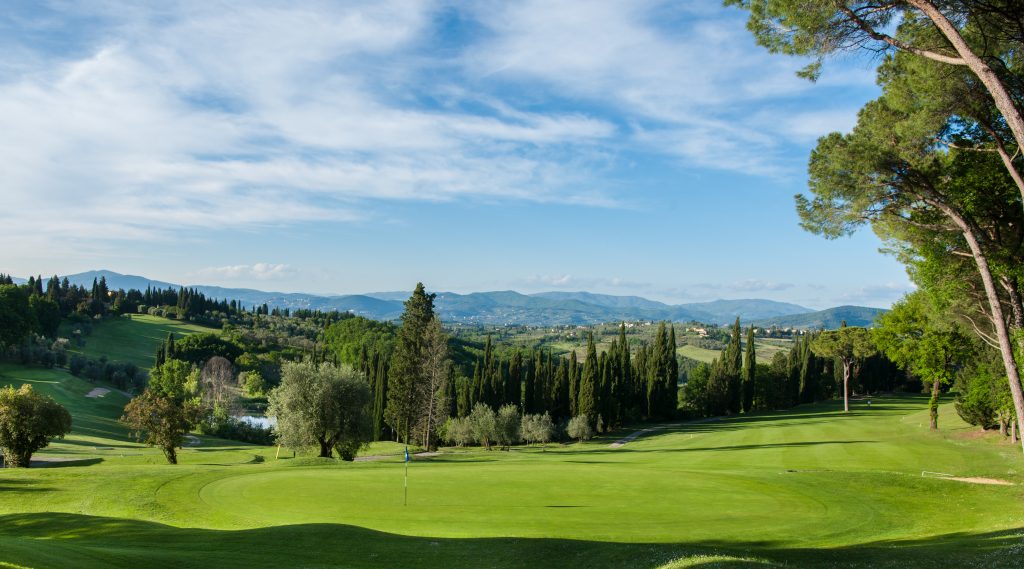
The birds are twittering as I wind my way along the cypress-lined drive to this historic golf course. The cast iron gates emblazoned with the club’s crest had swung open on my approach, perhaps, I mused nonsensically, in a sentimental tribute to my nationality, given that Englishman Cecil Blandford and Irishman Peter Gannon designed the challenging course in 1934. Passing by Hole 9 on a buggy tour, it becomes clear why New York Times author Chris Santella included Ugolino as one of his Fifty Places to Play Golf Before You Die. Who could resist taking a swing, having a long walk (you can be out for over five hours) and calmly putting a few balls surrounded by the silvery green beauty of olive trees and snow-capped mountains in the distance? I, for one, could not upon receiving an invitation to take a lesson at Ugolino. Learning the difference between an iron and a wedge had been on my bucket list for a long time. Somewhere in my psyche I view the discipline as the afterlife to my tennis days, a less physical antidote to the mayhem administered to one’s knees during strenuous singles matches ensured in my thirties and now forties. “Don’t wait too long,” Federica Dassù instructs me. “Start playing now while you’re still relatively young.”
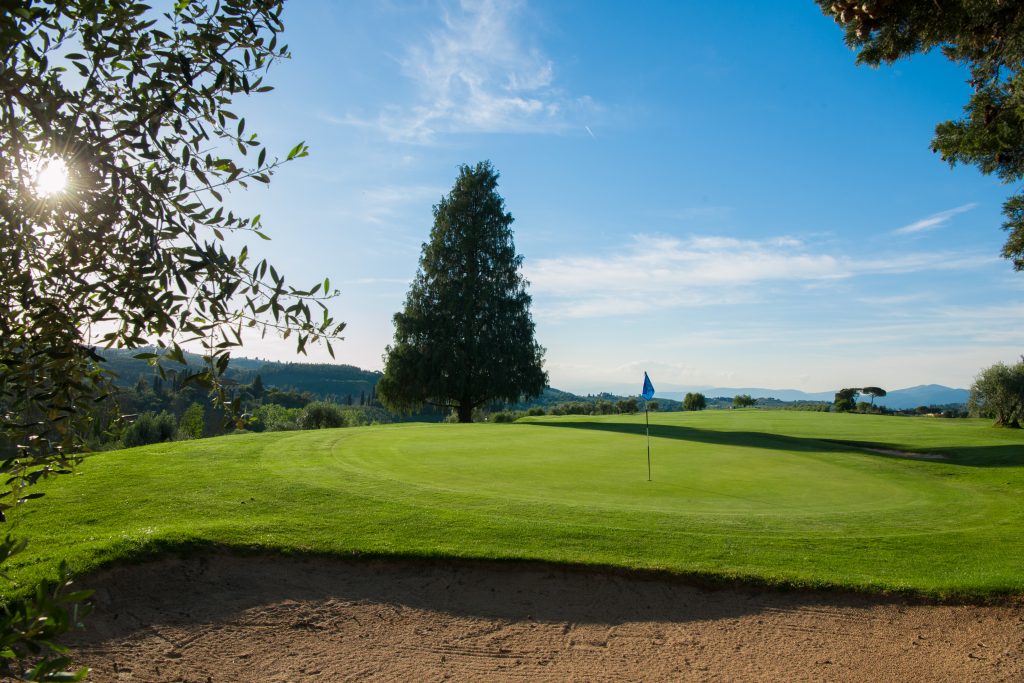
Dassù is a dazzling inspiration. Born in Milan in 1957, she was the first Italian woman to turn professional and the longevity of her golfing career is a glowing example for the sport. Competing between 1983 and 2003, she won six tournaments on the European Tour and helmed Italy’s women teams between 1993 and 2008, in addition to being one of the 11 members of the Hall of Fame of Italian Golf, as nominated by the Italian PGA. I can scarcely believe my luck as Federica begins to impart her copious knowledge, whereas she struggles to believe that an Englishwoman (“home to the finest golf courses in the world!”) had never touched a set of clubs. (That’s not entirely true; I’ve always been a bit of a dab hand at crazy golf thanks to family holidays. The recent May Day weekend left my other half agape at my previously unknown ability to send golf balls up ramps and through pipelines.)

In the quietude of the driving range, Federica hands me a 7 iron, if memory serves me right. She pops a golf ball on a tee and demonstrates how to hold the club (“one hand just beneath the other, without gripping it too much”) and how to stand before taking a swing. Watching Federica is poetry in motion, the way she shifts the energy from stationary to kinetic is worth taking a lesson alone. Now she is looking at me, however, and nerves are creeping in at the thought of bogeys, not birdies. Perhaps it’s the tennis or my competitive streak, but I do manage to hit the ball and, by the end of the half-hour session on the driving range, it’s even become airborne, albeit with an annoying tendency to the left.
After a few minutes on the putting green, it’s time to retire to the three-storey clubhouse, a glorious listed building that is a triumph of Florentine architect Gherardo Bosio’s 1930s futuristic style. (Bosio worked extensively in Africa and Albania, whilst designing the swimming pool at Florence’s historic tennis club in the Cascine park, Casa della Gherardesca, now home to Four Seasons Florence, and Palazzo Giuntini, a building that houses another luxury hotel, the St. Regis, all prior to his premature death aged just 38.) It was Bosio who reached out to Pier Luigi Nervi to design the striking diving board beside the marble pool at Golf Ugolino, for which day passes are available to non-members in the summer. Set in the shade of a wooded corner, the pool provides food for thought about Italian futurist design with its play on bold lines and subtle shades. Renowned for his stamp on the Fiorentina football stadium, dating to the same period (1930-32), and his later more dramatic buildings such as the Pirelli skyscraper in Milan, Nervi’s legacy also lives on in smaller works such as this irresistible invitation into deep water.
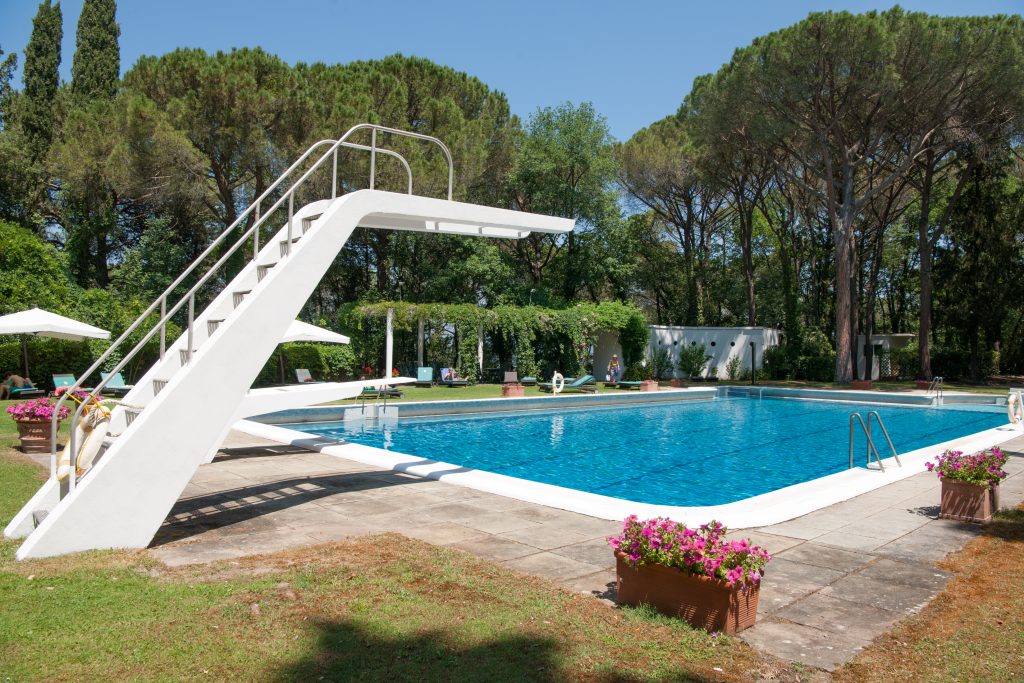
Up the curvaceous steps in the clubhouse, a homely feel pervades the place, from the cozy sofas to the exceedingly good restaurant, which has been manned for years by a family from Campania. It’s a case of “whatever you fancy, whenever you want, but we know that you’ll like it”, which works just fine for the members of Golf Ugolino and their guests. Our arms are expertly twisted into trying the delicious eggplant parmigiana as regulars relax after their exertions between bunkers and greens. None of them know me of course, but they all say a courteous buonasera.
It’s fitting that this feature about Golf Ugolino is being published in our May issue since the month has always been a special one in the history of the golf course. On May 1, 1983, the last day of the Italian Open was played here. Having won the Masters at Augusta two weeks prior, Severiano Ballesteros arrived at the last hole two shots behind Germany’s Bernard Langer and the UK’s Ken Brown. The Spaniard needed an eagle to go into a playoff. A crowd gathered behind Ballesteros as he approached the green with just the one chance to hole out. Asking the crowd for silence, he took his nine iron and hit the ball straight in the hole. In the end, Bernard Langer proved victorious in a thrilling playoff. To this day, it remains one of the most enthralling tournaments ever played in Italy attended by the likes of Greg Norman, Sandy Lyle and Sam Torrance.
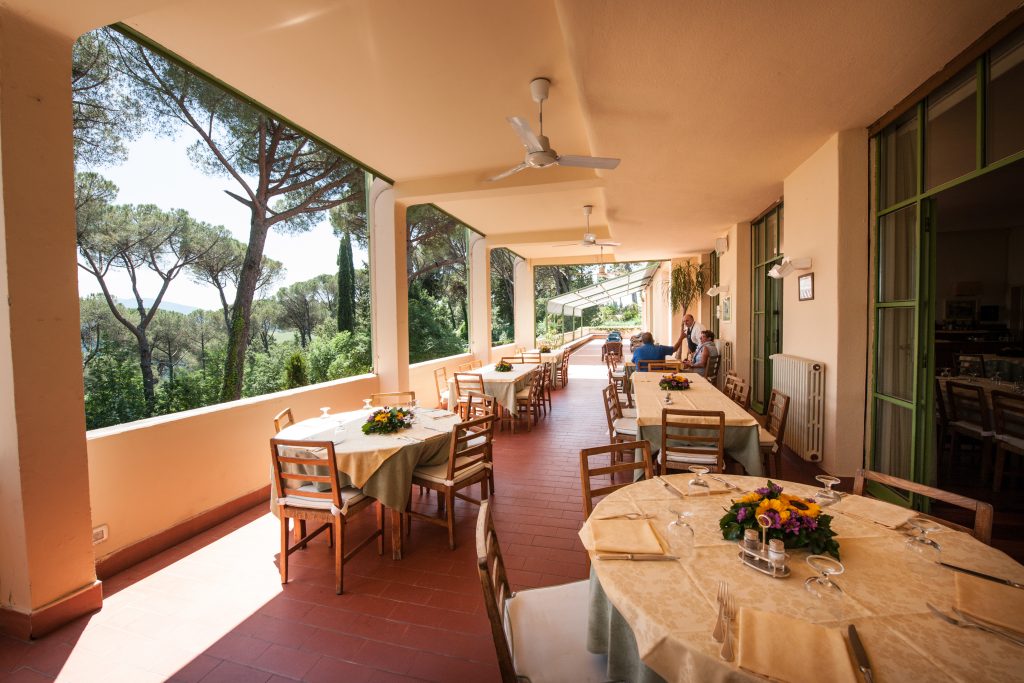
Since my day on the driving range, golf and Golf Ugolino have remained on my mind. While it might be “deceptively simple and endlessly complicated” (Arnold Palmer), I can think of nowhere more beautiful to while away the spring, learning a new sport in the great Tuscan outdoors. I recommend you do the same.


